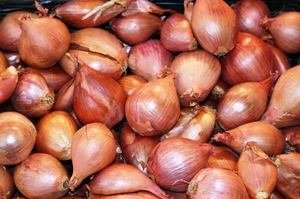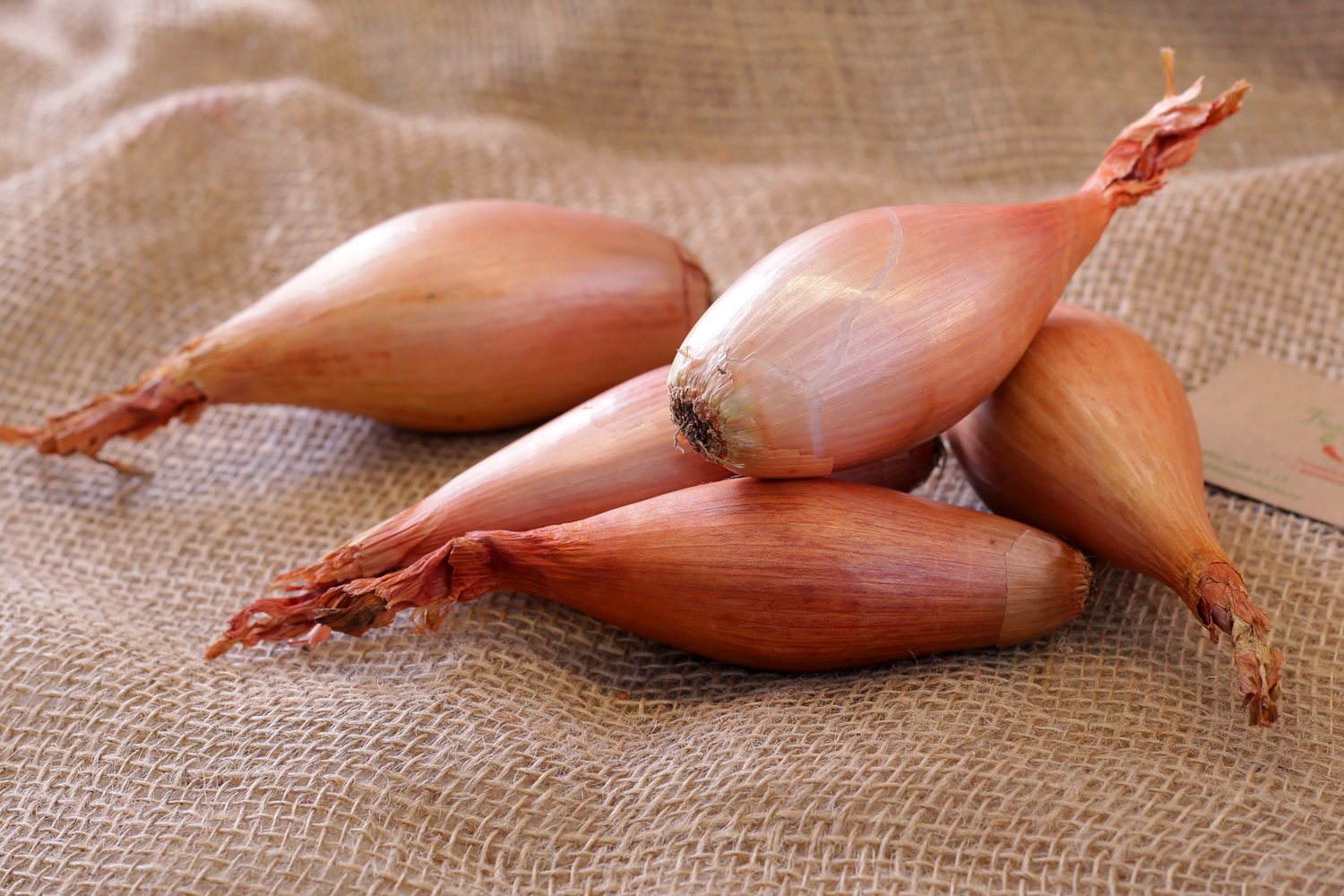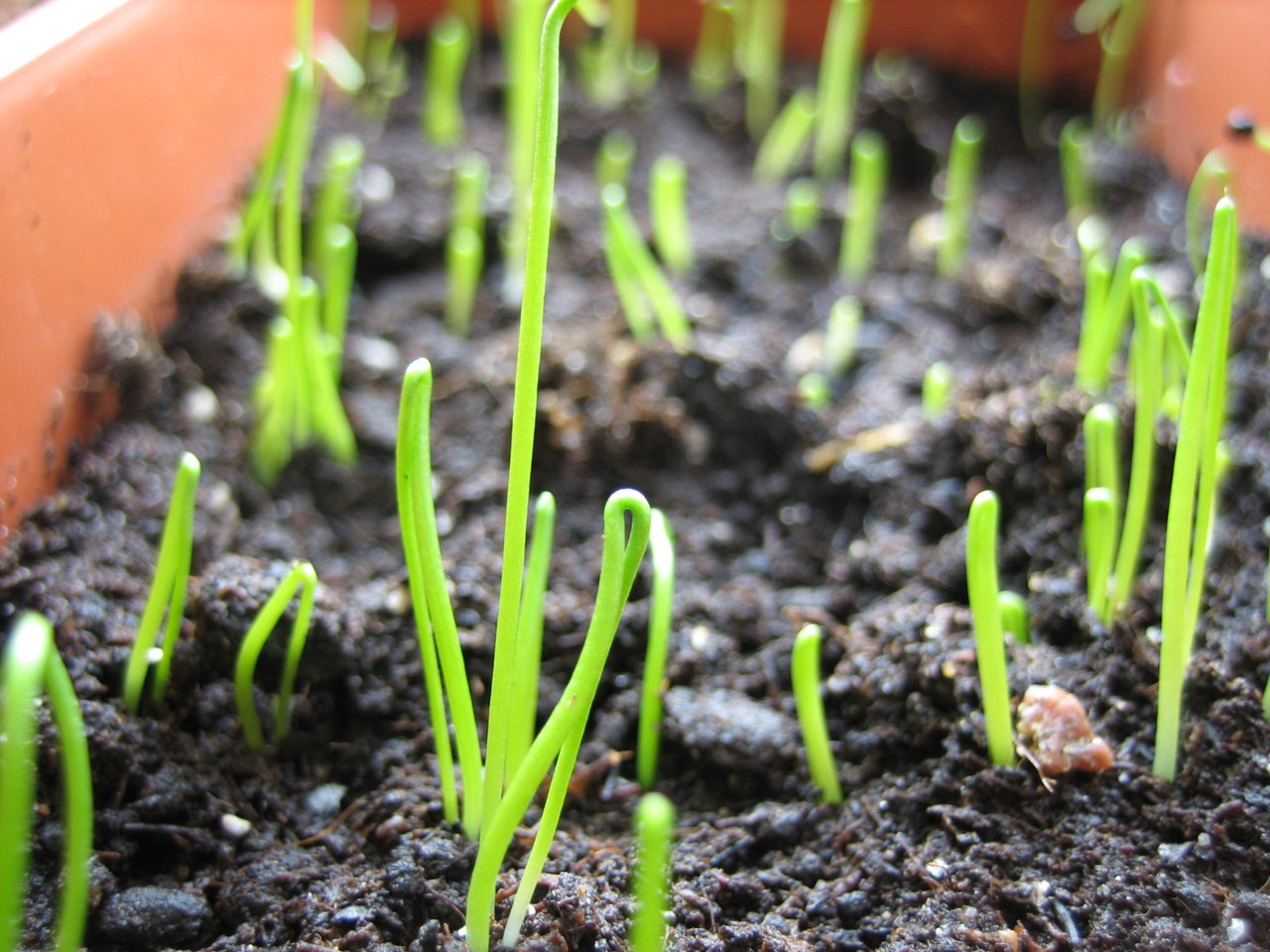Many summer residents appreciate shallots for their pleasant, delicate taste and mild aroma. This vegetable does not cause tears. For these qualities, shallots were even called "aristocrat" among other varieties of onions. Often, summer residents ask how to properly grow this onion and what conditions are required for it.
Content
Properties and description of shallots
The name Alium ascalonicum got this vegetable from one not little-known city in Palestine - Ascalon. For the first time this culture dates back to 1260 written. Today, shallots are grown in many countries of Europe, Asia, America, in most regions of Russia and neighboring countries.
Shallots are a variety of onions, as well as in its qualities and characteristics, practically does not differ from it, in addition to the fact that it does not have such large bulbs and it persists for a longer time, without sprouting. Shallots are a lot of nesting onions, 4-25 bulbs can appear from one seed, each of them can weigh 20-50 grams. The green shoots of the plant with a waxy shade are narrower and more rounded, unlike other varieties of this vegetable.
The bulbs of this species are small (about 60 grams) and slightly elongated. The taste is soft, juicy, and completely not bitter, even sometimes it seems sweet. It is used to prepare a wide variety of dishes. Due to the large amount of dry matter, this vegetable is suitable for drying, it can be pickled or caramelized.
Shallots have many valuable properties and advantages:
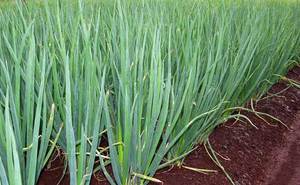 feathers have the ability to lie down quickly, which has a positive effect on the ripening of the crop and simplifies the process of harvesting;
feathers have the ability to lie down quickly, which has a positive effect on the ripening of the crop and simplifies the process of harvesting;- Due to the large number of bulbs per seed, the yield will always be excellent. Any single nest can bear from 5 to 15, and often even up to 25 fruits with a total weight of 200-350 grams;
- due to a short growing season, this crop ripens earlier than anyone else. It also prevents the defeat of feathers by cervical decay and peronosporosis;
- planting onions is quite simple, without any problems;
- the harvest is well and for a long time stored, almost a whole year, does not shoot arrows and is not subject to decay.
Onion varieties
Like other onion varieties, shallots are late, mid and early ripening. Often, summer residents are divided into 2 general types:
- ancient - the growing time for this species can be either later or earlier. This type of onion has large bulbs with a red-yellow color and brown husks;
- Bushes are a precocious and multi-primordial variety. This species includes species with small and dense fruits with dried yellow scales. The seed efficiency of the variety is rather low, but it is characterized by long storage.
In addition, this culture is divided into sweet, spicy and peninsular types. There are quite a few varieties of this plant for growing today, but among them the most popular ones can be distinguished.
Early maturing species:
- vitamin - a green feather can be harvested within 3 weeks after the start of sprouting. The growing season lasts 3 months. A separate nest contains up to 15 bulbs weighing about 35 grams;
- belozerets - the growing season lasts 3-4 months. The vegetable has an oval shape weighing up to 35 grams. The taste is pungent, but not bitter. Germinates best in the Caucasus.
Mid-season species:
 andreyka - suitable for planting in summer cottages. An oblong vegetable, weighing up to 25 grams, the yield can be up to 2 kg per meter;
andreyka - suitable for planting in summer cottages. An oblong vegetable, weighing up to 25 grams, the yield can be up to 2 kg per meter;- albic are elongated bulbs weighing up to 35 grams. each, from a bush you can take up to 9 pcs. Albik shows a good harvest - up to 30 tons per hectare. It is well stored, the growing season lasts 2 months. Can be planted before winter;
- ayrat - suitable for planting in summer cottages. From one bush, you can take up to 7 rounded bulbs weighing 17 grams, and up to 1.7 kg are harvested from one meter.
Late maturing species:
- Siberian amber - the growing season lasts up to 2 months. The bulbs are round, slightly flattened, weighing up to 35 grams. The variety is suitable for planting in summer cottages, you can harvest up to 22 tons per hectare, is shown for planting in most onion-growing areas;
- Ural purple - represented by very large bulbs up to 70 gr. It is characterized by a high yield - 16 tons per hectare, grows well in many areas of onion cultivation.
How to grow shallots?
This culture does not often form arrows, therefore its cultivation from seeds is more suitable for specialists. However, this does not mean that, if desired, summer residents also cannot do this in their gardens. It is quite difficult to collect the seeds yourself, but they can be purchased from specialized departments. And if you still dare get the seeds of this onion yourself, then you need to proceed as follows:
- It is necessary to choose the best quality bulbs, their storage time should be at least 3 months with a temperature of + 5 / 11C.
- Onions are planted in open ground at the end of April. After this vernalization, the shallots will quickly shoot arrows with inflorescences, and seeds are collected from them.
- The main condition for this process is not to plant shallots near other types of onions, so that there is no cross-pollination.
Site and soil preparation
Shallots have some cultivation characteristics, they are planted both for feathers and for the bulbs themselves. To have an excellent harvest, you need to competently choose a drop-off site and prepare the ground well for this:
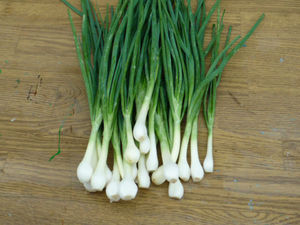 Much attention must be paid to soil preparation. This vegetable likes the non-acidic and loose fertile soil better. Sour soil is absolutely not suitable for growing onions. On them, the plant will quickly turn yellow feathers, and the bulbs dry out as a result. In places where groundwater is close to the ground, the vegetable should be grown with pre-drained.
Much attention must be paid to soil preparation. This vegetable likes the non-acidic and loose fertile soil better. Sour soil is absolutely not suitable for growing onions. On them, the plant will quickly turn yellow feathers, and the bulbs dry out as a result. In places where groundwater is close to the ground, the vegetable should be grown with pre-drained.- Shallots love open and well-lit areas, unshaded by tree foliage. When choosing a landing site, this must be taken into account.
- Before planting, the land must be dug up and thoroughly fertilized with minerals and organic matter.
- It is necessary to find out which predecessors were in place, which is now planned for shallots. It is best to plant after any variety of cabbage, potatoes, beans, pumpkin, zucchini, cucumbers and tomatoes. Avoid planting shallots where there have been corn, sunflowers, carrots, beets, and garlic. In the neighborhood with onions, it is advisable to pick up any varieties of salads, carrots, strawberries, radishes, cucumbers. All these cultures help each other. For example, a carrot can drive off an onion fly with a smell, for which the shallot will thank the carrot in the same way - it will not let the carrot fly sit on the vegetable.
- It is undesirable to grow shallots from seeds in one place for more than 3 years.
Planting shallots for green feathers
This vegetable is perfect for planting on green feathers due to its rapid maturation. Feathers are not prone to forming arrows, for a long time remain soft and tender... To harvest the maximum amount of green feathers you need to do the following:
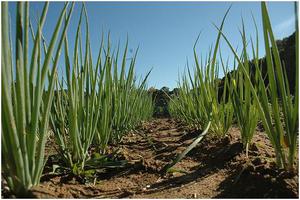 You can plant onions on a feather on open ground, or in greenhouses, as well as on balconies in flower pots.
You can plant onions on a feather on open ground, or in greenhouses, as well as on balconies in flower pots.- If you grow a vegetable at home, then you need to plant it in early March. You can harvest the crop in 30 days.
- After cutting, the bulb can be used again. It must be removed from the ground, cut off half and put back into the ground. After another month, you can get a re-harvest.
- On open ground, onions are planted in early May. The first crop can be harvested in 30 days, when the size of the feathers will be 22-24 cm. This is especially true in spring, when the body lacks vitamins.
Planting shallots in spring
Spring onion planting done both for the greenery and for the fruit itself. The whole procedure has the following stages:
- The vegetable is sown in the 3rd decade of April, but it is necessary to prepare the land for planting in the fall. For which the site is cleaned of weeds, dug up, then fertilized - compost or humus will be required in the amount of 6 kg per square meter, and superphosphate 60 gr. per sq.m. You can pour a little ash. Then it is necessary to form beds with a distance of 25 cm between each other, they will only need to be thoroughly loosened in the spring and again fertilized with nitrogen preparations in the amount of 30 grams. per sq.m.
- Seeds must be prepared in advance for planting. Why are they placed in gauze or bandage, which is wrapped and dipped in a container with water. The container must be closed so that the seeds do not dry out. In this form, they should be at a temperature of 21-24C for about two days. The seeds must be washed under water every 7 hours, then put back in a container with fresh water.
- Immediately before planting, the seeds must be slightly dried in the fresh air, then they are sown on the beds and covered with soil. From above, it is best to cover the beds with humus or peat.
- Seed beds must be watered thoroughly.
- In a month, with favorable weather and proper care, you can get the first harvest of feathers.
- In the first year, the seeds form a bulb, which will consist of 4 small bulbs, into which, after drying, it will disintegrate. These bulbs are planted in the next season to obtain numerous and larger crops, new bulbs will be suitable for subsequent propagation for no more than 4 years. Then the planting stock is renewed again to maintain the grade.
Planting shallots for the winter
Despite the excellent resistance of this culture to severe frosts, it is best to plant it before winter in the southern regions. In the middle lane the yield will be no more than 55-65%... The vegetable is sown in the fall to get green feathers already with the onset of spring and begin this procedure from October so that the onion hardens in the ground, but could not form sprouts until the first frosts:
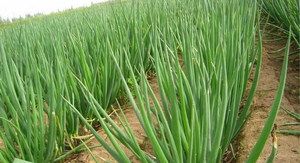 The selected place for sowing is cleaned of dry grass.
The selected place for sowing is cleaned of dry grass.- Rotted compost or humus is added to the dug earth and beds are made with a distance of at least 25 cm between themselves.
- Seeds do not need to be prepared, they are simply sown in the made beds and buried in soil.
- For the winter, the sowing area is covered with polyethylene so that the seeds do not freeze.
How to care for onions
This vegetable after disembarkation needs some care behind itself, consisting of the following stages:
- Initially, crops need periodic watering during the entire growing season. One month before harvesting, hydration can be completed, so the feathers have time to dry out and wither.
- Constant loosening and weeding of the earth is considered an indispensable condition. The weed grows quickly, clogging up onion crops.
- When the culture begins to sprout the first shoots, it can be fertilized with nitrogen, humus or urea. Fruits that begin to form will need potassium, ash and droppings.
- If you need to grow a larger onion, then you need to thin it out. At the beginning of July, you need to carefully remove the small bulbs together with the feathers, leaving about 4 large bulbs in the hole.Cut feathers are suitable for cooking.
- Onions are not often subject to disease, but this happens when the weather is cold and damp for a long time outside. In these cases, the infected onions are simply harvested, and whole bushes are soaked in antifungal compounds. When an onion is infected with worms, the fruits are treated with a saline aqueous solution. You can get rid of onion flies by spraying ash over crops.
- Harvesting takes place in early August. By this time, the bulbs will already be full.
Growing shallots on the backyard is available to any person, but, alas, this crop has not yet entered the list of the most grown representatives of this group. But high ripening rate, resistance to shooting, which makes it possible to preserve the harvest, and excellent taste indicate that shallots will certainly find their connoisseurs among enthusiastic gardeners.
